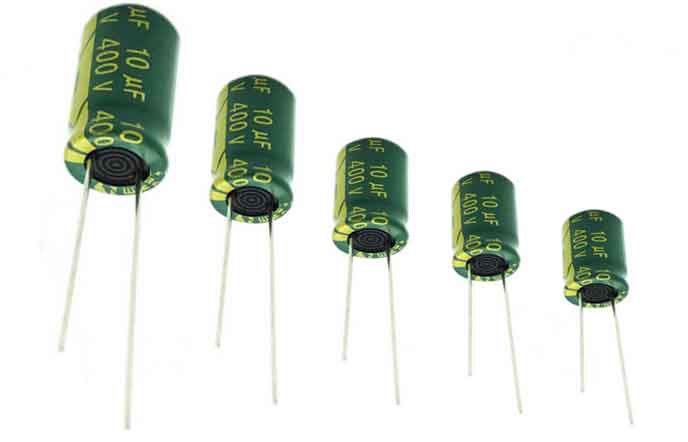Capacitors are components that store electricity and electrical energy (potential energy). A conductor is surrounded by another conductor, or the electric field lines emitted by one conductor are all terminated in the conductive system of another conductor, called a capacitor. The Capacitor main parameters:
(1) The nominal capacitance is the capacitance marked on the capacitor. But the actual capacitance of the capacitor is
The nominal capacitance is deviated, and the accuracy level has a corresponding relationship with the allowable error. General capacitors are commonly used in grades Ⅰ, Ⅱ, and Ⅲ, and electrolytic capacitors use grades Ⅳ, Ⅴ, and Ⅵ to indicate capacity accuracy, which is selected according to the application. The capacitance value of the electrolytic capacitor depends on the impedance presented when working under AC voltage. The capacitance value will change with the change of the operating frequency, temperature, voltage and measurement method. The unit of capacitance is F (French).
Since a capacitor is a “container” for storing electric charge, it has a problem of “capacity”. It is uniformly stipulated internationally that when a 1 volt DC voltage is applied to a capacitor, the amount of charge it can store is the capacitance of the capacitor (that is, the amount of electricity per unit voltage), which is represented by the letter C. The basic unit of capacitance is the farad (F). Under the action of a 1 volt DC voltage, if the charge stored in the capacitor is 1 coulomb, the capacitance is set to 1 farad, the farad is represented by the symbol F, and 1F=1Q/V. In practical applications, the capacitance of capacitors is often much smaller than 1 farad, and smaller units are commonly used, such as millifarad (mF), microfarad (μF), nanofarad (nF), picofarad (pF), etc. The relationship is: 1 microfarad equals one millionth of a farad; 1 picofarad equals one millionth of a microfarad, namely:
1 Farad (F) = 1000 millifarad (mF); 1 millifarad (mF) = 1000 microfarad (μF); 1 microfarad (μF) = 1000 nanofarad (nF); 1 nanofarad (nF) = 1000 picofarads Method (pF); namely: 1F=1000000μF; 1μF=1000000pF.

(2) The rated voltage is the highest DC voltage that can be continuously applied to the capacitor at the lowest ambient temperature and the rated ambient temperature. If the operating voltage exceeds the withstand voltage of the capacitor, the capacitor will be broken down, causing damage. In practice, as the temperature increases, the withstand voltage value will become lower.
(3) Insulation resistance. The DC voltage is added to the capacitor to produce a leakage current. The ratio between the two is called the insulation resistance. When the capacitance is small, its value mainly depends on the surface state of the capacitor; when the capacity is greater than 0.1 μF, its value mainly depends on the medium. In general, the greater the insulation resistance, the better.
(4) Loss. Under the action of an electric field, the energy consumed by heat in a unit time is called loss. The loss is related to the frequency range, dielectric, conductance, resistance of the metal part of the capacitor, etc.
(5) Frequency characteristics. As the frequency increases, the capacitance of general capacitors shows a law of decline. When the capacitor works below the resonant frequency, it shows capacitive; when it exceeds its resonant frequency, it shows inductive, then it is not a capacitor but an inductor. Therefore, it is necessary to avoid the capacitor working above the resonance frequency.




